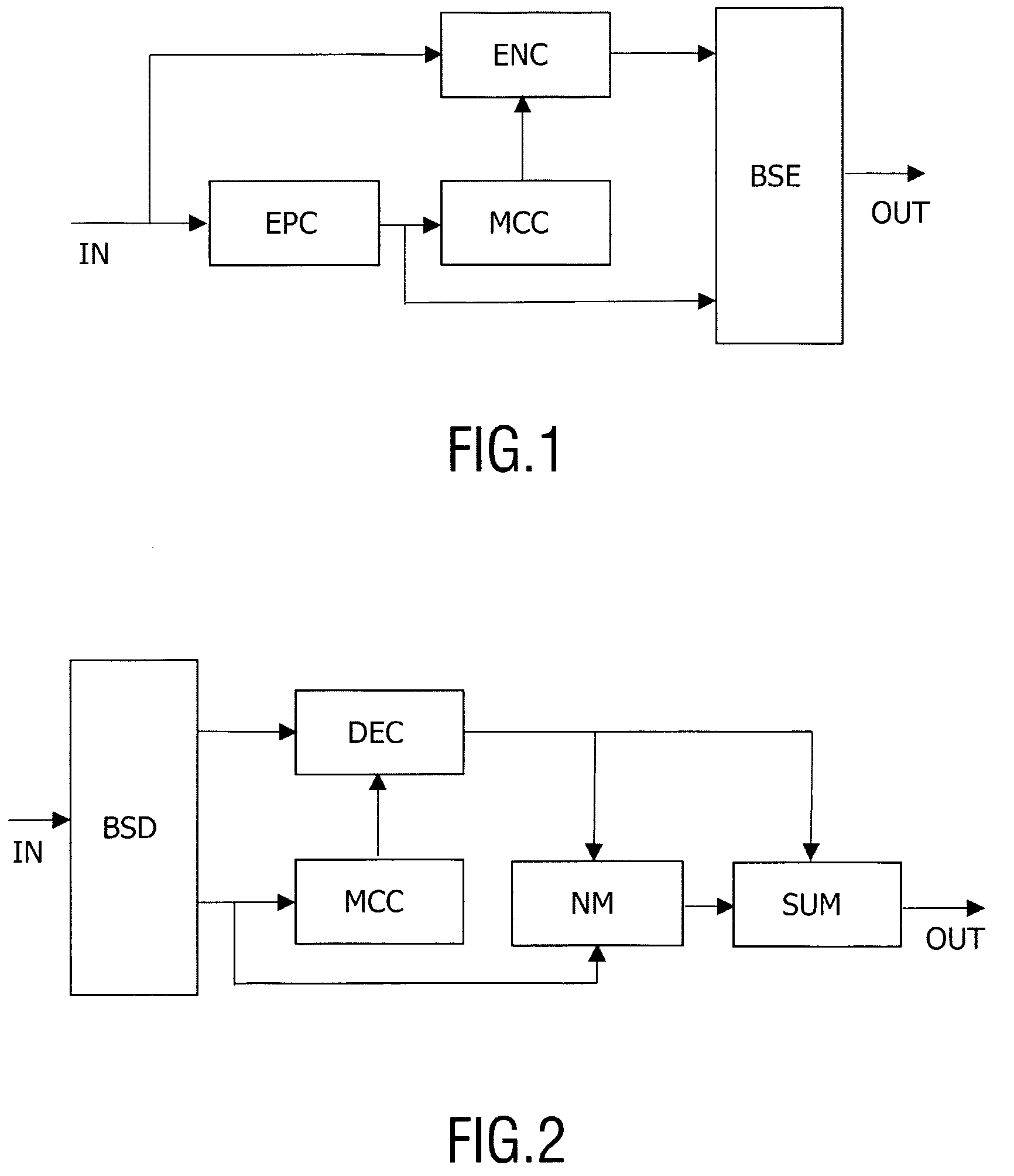Scalable audio coding
a scalable, audio coding technology, applied in the field of audio signal coding, can solve the problems of reducing the noise signal, the available bit rate is too low, and the bandwidth limitation is effectively a reduction in the audio quality,
- Summary
- Abstract
- Description
- Claims
- Application Information
AI Technical Summary
Benefits of technology
Problems solved by technology
Method used
Image
Examples
Embodiment Construction
[0049]FIG. 1 shows a block diagram illustrating the principles of a preferred audio encoder with respect to signal flow. An audio input signal IN is applied to encoder means ENC. The encoder means ENC provides a first encoded signal part that is applied to a bit stream encoder BSE that provides the first encoded signal part to an output bit stream OUT from the audio encoder. Preferably, the encoder means comprises a deterministic type of encoder, such as a sinusoidal encoder or a transform encoder. In case of a sinusoidal encoder, the encoder determines which parts of the audio input signal IN to be modeled with sinusoids. In case of a transform encoder, the encoder means determines a set of transform coefficients to represent the audio input signal IN.
[0050]In the embodiment of FIG. 1 a spectral representation of the audio input signal IN is represented by its excitation pattern. The audio input signal IN is applied to excitation pattern computation means EPC adapted to compute an ...
PUM
 Login to View More
Login to View More Abstract
Description
Claims
Application Information
 Login to View More
Login to View More - R&D
- Intellectual Property
- Life Sciences
- Materials
- Tech Scout
- Unparalleled Data Quality
- Higher Quality Content
- 60% Fewer Hallucinations
Browse by: Latest US Patents, China's latest patents, Technical Efficacy Thesaurus, Application Domain, Technology Topic, Popular Technical Reports.
© 2025 PatSnap. All rights reserved.Legal|Privacy policy|Modern Slavery Act Transparency Statement|Sitemap|About US| Contact US: help@patsnap.com



